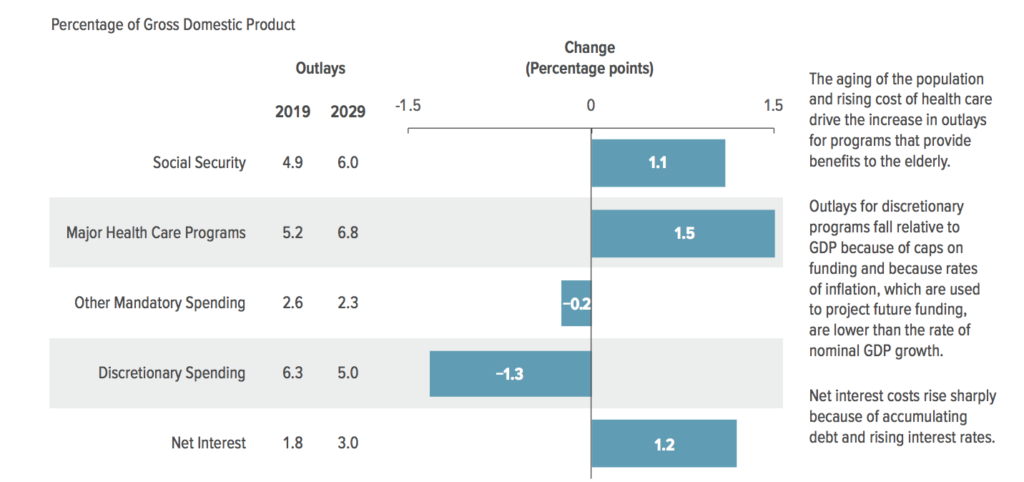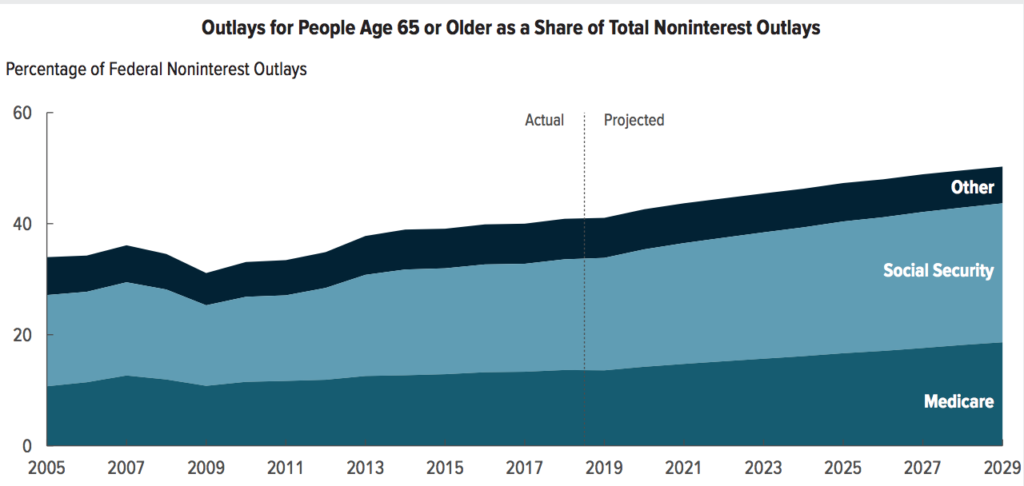Every year, the Congressional Budget Office projects how the federal budget will look over the coming decade. For the coming decade, the numbers look grim.
Federal deficits in CBO’s baseline average $1.2 trillion per year and total $11.6 trillion over the 2020– 2029 period…Those deficits would average 4.4 percent of gross domestic product (GDP). Other than the period immediately after World War II, the only other time the average deficit has been so large over so many years was after the 2007–2009 recession.
How does health care play into this? It is a key contributor of the long-run deficit. There are two reasons for this. First, the population is aging. As the share of individuals aged 65 and above increases, the federal government (namely Medicare) will be holding the bag for a larger and larger share of health care spending. In addition, health care spending per person is also expected to rise faster than the economy overall, further putting pressure on the budget. As shown in the figure below, federal spending on health care programs will grow by 1.5 percentage points as a share of GDP by 2029. In short, right now, federal spending on health care makes up 5.2% of the total economy and this will increase to 6.8% of the economy in 10 years and 8.9% of the economy by 2049. In 1994, federal spending on health care was only 3.1% of the overall economy.

Additional costs for the elderly include and increasing cost for funding social security.
What is the federal government spending money on for health care? Largely Medicare and Medicaid, but also health insurance subsidies and the Children’s Health Insurance Program (CHIP)

1 Comment